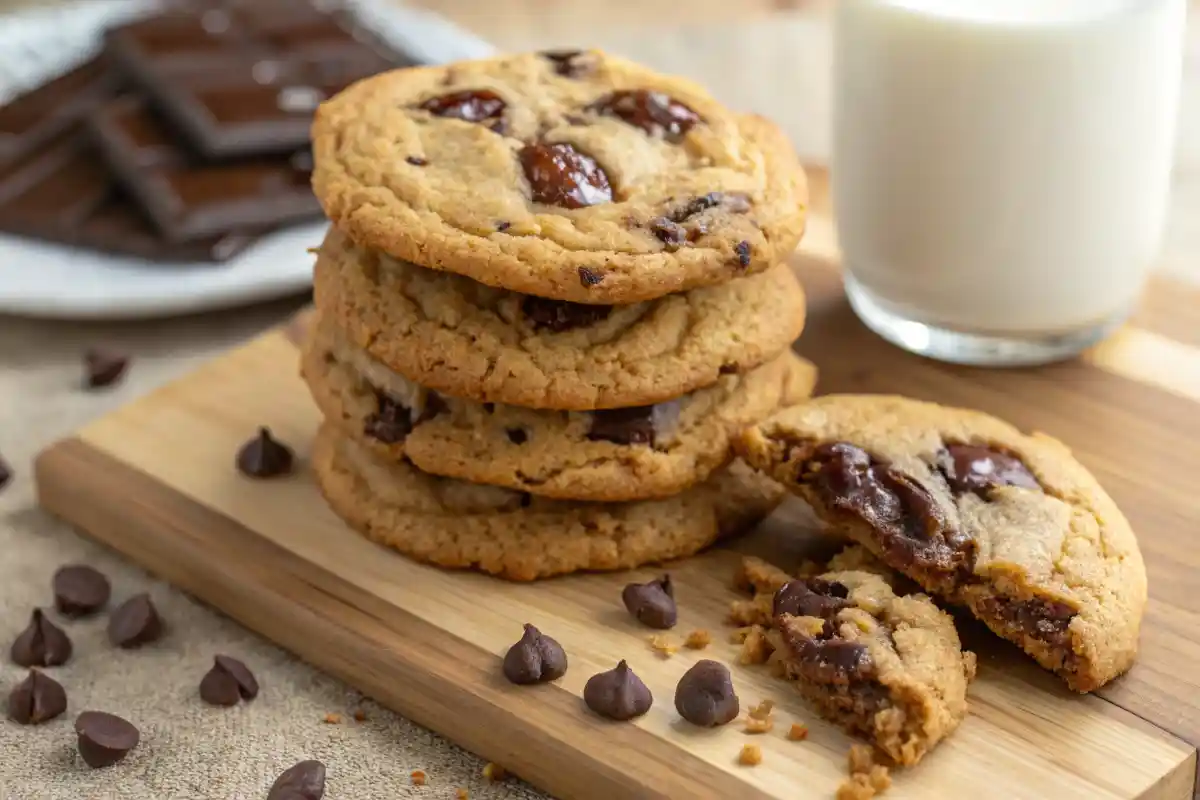Ever wondered how to cook cookies that taste just as good (or even better!) than those from your favorite bakery? Well, you’re in the right place. This guide isn’t just another recipe; it’s a comprehensive journey into the art of cookie baking. From understanding the science behind each ingredient to troubleshooting common mishaps, we’ll cover it all. Whether you’re a beginner baker or a seasoned pro looking to refine your skills, get ready to dive into the wonderfully sweet world of making cookies. We’ll start with the essentials, move through advanced techniques, and tackle those pesky problems, ensuring you’ll be baking cookies like a champion in no time. So, let’s get this cookie party started!
How to Cook Cookies: A Comprehensive Guide
The Allure of Homemade Cookies
There’s something magical about the aroma of freshly baked cookies filling your home, wouldn’t you agree? It evokes warmth and comfort, especially when you know how to cook cookies from scratch. Unlike store-bought options, homemade cookies offer a personal touch and immense satisfaction. Learning how to cook cookies is incredibly rewarding, and the cookie baking process itself can be lots of fun. From mixing the batter to baking, it’s both relaxing and fulfilling. Mastering how to cook cookies lets you create them exactly how you love. Indeed, if you know how to cook cookies, you’ll realize there’s no better way to unwind. The result of knowing how to cook cookies is always the best treat, plus, the joy of learning how to cook cookies is quite amazing. Knowing how to cook cookies is truly an essential skill! So, now that you’re aware of the magic of baking cookies, let’s begin!
Why This Guide? (Focus on comprehensive coverage)
Now, there are plenty of recipes out there, that’s true. But, this guide is different. You see, we aren’t just going to give you a recipe and send you on your way. Instead, we’re going to delve deep into the “why” behind the “how.” We’ll explore the role of each ingredient, explain the best cookie preparation techniques, and, perhaps most importantly, arm you with the knowledge to troubleshoot common baking problems. Think of this as your go-to resource for everything cookie related, whether you’re attempting classic chocolate chip cookies or venturing into gluten-free territory. This guide aims to take your skills from novice to master baker. It’s baking tips and tricks all in one place.
What You Will Learn (Brief overview of article sections)
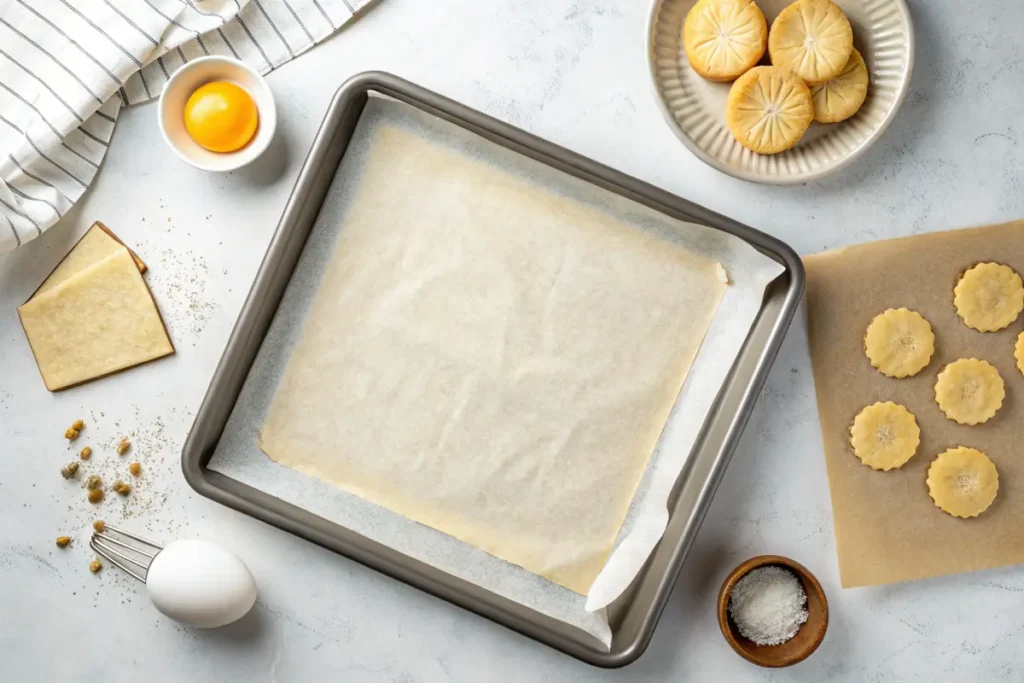
In this ultimate guide, you’ll first learn about the essential ingredients and tools you’ll need to create delicious cookies. Then we’ll walk you through a basic cookie recipe step by step, ensuring you understand each stage of the cookie baking process. We will, of course, explore various cookie recipes, including everything from sugar cookies to oatmeal cookies, even tackling those with dietary restrictions. Furthermore, we’ll tackle some advanced baking techniques to achieve different textures. And, that’s not all; you’ll find out what common baking mistakes can ruin your cookies, and how to avoid them. Finally, we’ll wrap things up with tips on proper storage and an FAQ section to cover those nagging questions you might have. So, are you ready to embark on this baking adventure? Let’s do this!
Essential Ingredients and Tools
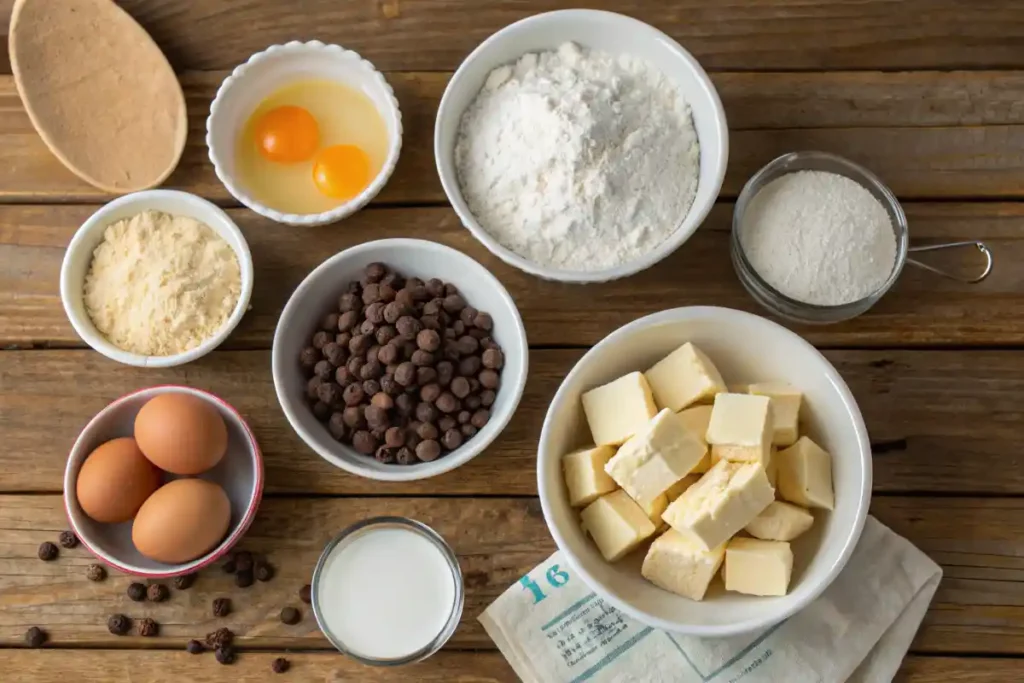
Essential Ingredients for Cookie Baking Success
The Importance of Quality Ingredients
You know, it might sound cliché, but it’s true: the quality of your cookie ingredients greatly affects the final result. Using fresh, good-quality ingredients can make a world of difference in the taste and texture of your homemade cookies. While using cheaper, low-quality ingredients might save you a few cents, they can make your cookies taste less than stellar. Think of it this way, you’re putting in all this effort, so why not use the very best that you can? Baking is a science, after all, and the cookie ingredients you use are your key variables.
Flour: The Foundation of Your Cookie
Flour is really the backbone of any cookie recipe; it provides the structure. But not all flours are created equal. All-purpose flour is the go-to for most recipes; it’s versatile and dependable. However, for a more tender result, cake flour, with its lower protein content, might be a better choice. For chewier cookies, you may want to experiment with bread flour. Furthermore, how to measure your flour is just as important, since it’s essential for accurate cookie preparation. Using a kitchen scale is the most precise method, but if you’re using measuring cups, lightly spoon the flour into the cup rather than scooping directly from the bag, which can pack it down. A good trick, right?
Sugar: Sweetening the Deal
Now, let’s talk about sugar! It’s not just about sweetness; it also contributes to the texture and browning of your cookies. Granulated sugar, also known as white sugar, is the standard for many cookie recipes, giving them a crisp edge. Brown sugar, on the other hand, adds moisture and a subtle caramel flavor, resulting in a chewier cookie. You can find dark or light brown sugars, each giving slightly different tastes. Powdered sugar, or confectioners’ sugar, is often used in more delicate cookie recipes. And hey, let’s not forget about other sweeteners, such as maple syrup, or honey which may have an impact on the taste and the texture.
Butter or Fat: Texture Matters
Butter is a baking staple, and its fat content plays a crucial role in the texture of your cookies. For most cookie recipes, unsalted butter is preferred because it allows you to control the salt content. However, using salted butter isn’t a big problem, you just need to adjust the recipe salt amount accordingly. The texture of the butter is also important; using softened but not melted butter is key. You can use other fats, such as shortening or even coconut oil, which can add to the different qualities of the cookies. Also, the butter can affect whether your cookies become soft, chewy, or crispy. How to use butter correctly can be tricky; but trust the process!
Eggs: Binding and Leavening
Eggs aren’t just there for protein; they act as a binder, holding the ingredients together and providing structure. The lecithin in egg yolks also helps to emulsify the dough, creating a smooth and cohesive mixture. In addition to this, eggs also add moisture, tenderness, and a bit of leavening, giving your cookies a bit of lift. Cookie recipes often call for large eggs, and it’s important to use the right size to maintain the perfect balance. And in case you’re wondering, egg whites can be useful to create a crisp texture in your cookies. So, yeah, eggs are a pretty big deal.
Leavening Agents: Baking Soda vs. Baking Powder
Baking soda and baking powder are the leavening agents that make your cookies rise. But they are not exactly interchangeable. Baking soda is a base that requires an acid to activate. For example, the acids in brown sugar or buttermilk. It’s also quite powerful. Baking powder, on the other hand, already contains the acid it needs to leaven. Therefore it doesn’t need any other ingredients to be activated. You need to use the correct amount of the right leavening agent in your cookie preparation to achieve your desired result.
Essential Baking Tools You’ll Need
Must-Have Mixing Bowls and Spoons
Alright, let’s move on to the tools! First things first: you can’t make a proper cookie without a good set of mixing bowls. Ideally, you’ll have a variety of sizes for different steps of the process. Glass, stainless steel, or ceramic bowls are all good options. You’ll also need sturdy mixing spoons or spatulas for combining your cookie ingredients.
Measuring Cups and Spoons: Precision is Key
Baking, as you know, is a science, so precise measurements are crucial. Invest in a good set of measuring cups and spoons, both liquid and dry. You may need to level off your dry ingredients with the flat side of a knife for accuracy. After all, how to measure the ingredients is a key part of baking! It’s more important than you think.
Baking Sheets and Parchment Paper
Baking sheets or cookie sheets are what you will use to cook your cookies, so make sure they are in good condition. You should avoid using very old baking sheets, as they may bake the cookies unevenly. In order to prevent the cookies from sticking, it’s best to line the baking sheets with parchment paper. Parchment paper is really helpful for even cookie baking and easy clean-up, too!
Cookie Cutters and Spatulas
Finally, for shaped cookies, such as sugar cookies, cookie cutters in various shapes and sizes are necessary. You’ll also need a good metal spatula for removing the baked cookies from the sheet. A thin, flexible spatula works wonders for getting those delicate cookies off without breaking them.
The Basic Cookie Recipe: Step by Step
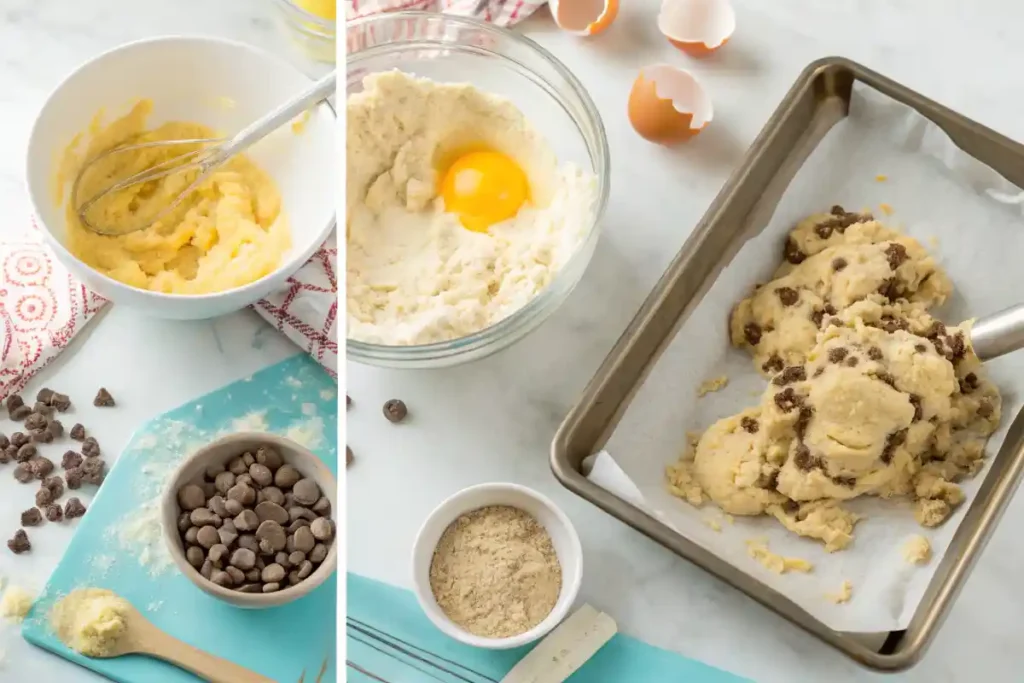
Mastering the Classic Chocolate Chip Cookie
Okay, now that we’ve covered the essential ingredients and tools, let’s jump into how to cook cookies. There’s no better place to start than with the classic chocolate chip cookie. This recipe serves as a great foundation for understanding the fundamentals of cookie baking, and it’s a crowd-pleaser too. So, let’s grab our bowls and spatulas and get started, shall we?
Gathering Your Ingredients (Detailed list)
Before you do anything else, make sure you have everything you need and everything measured out. This will make the cookie preparation process smoother and will help you avoid any mishaps. For this recipe, you’ll need:
- 1 cup (2 sticks) unsalted butter, softened
- ¾ cup granulated sugar
- ¾ cup packed brown sugar
- 2 large eggs
- 1 teaspoon pure vanilla extract
- 2 ¼ cups all-purpose flour
- 1 teaspoon baking soda
- 1 teaspoon salt
- 2 cups chocolate chips
How to measure everything accurately is important, so double check. You might be tempted to use a shortcut here, but don’t do it! Remember that good cookie preparation requires precision.
Step 1: Creaming Butter and Sugar
In a large mixing bowl, place the softened butter, granulated sugar, and brown sugar. Using an electric mixer or a wooden spoon, cream together the butter and sugars until they’re light, fluffy, and well-combined. This usually takes about 2-3 minutes. The creaming process is a key step that incorporates air into the batter, resulting in a lighter cookie texture. Don’t skip this! It’s part of how to cook cookies properly. It’s also best to scrape down the sides of the bowl a couple of times during mixing to make sure everything gets incorporated evenly.
Step 2: Adding Eggs and Vanilla Extract
Next, add the eggs, one at a time, to the creamed butter and sugar mixture. Beat well after each addition, ensuring that the eggs are fully incorporated. Then, stir in the vanilla extract. This adds extra flavor and aroma to your cookie dough. The mixture may look a bit curdled after the first egg, but don’t worry, it’ll come together. This step helps to create a stable emulsion, so the cookies don’t separate during baking.
Step 3: Combining Dry Ingredients
In a separate medium bowl, whisk together the all-purpose flour, baking soda, and salt. This ensures even distribution of the leavening agent and salt throughout the dough. Gradually add the dry ingredient mixture to the wet ingredient mixture, mixing on low speed until just combined. Be careful not to overmix the dough, as this can develop the gluten and result in tough cookies. Mix until just combined; you want to avoid too much kneading.
Step 4: Incorporating Chocolate Chips
Finally, it’s time to add the chocolate chips. Gently fold them into the dough using a rubber spatula. You could also use other kinds of chips, such as white chocolate or peanut butter chips. You can also add chopped nuts at this point. Make sure they are well distributed. Don’t be shy with the chocolate chips; the more, the merrier, right?
Step 5: Chilling the Dough (importance and tips)
Cover the bowl with plastic wrap and refrigerate the cookie dough for at least 30 minutes, but preferably for 1-2 hours. Chilling the dough helps to prevent the cookies from spreading too much during baking, and also allows the flavors to meld together. Don’t skip this step; patience is key! If you are really pressed for time, you can chill for 15 minutes, but longer is better.
Step 6: Preparing Your Baking Sheet
Preheat your oven to 375°F (190°C). Line your baking sheets with parchment paper. This will prevent the cookies from sticking and make cleanup a breeze. Now, even if you’re using non-stick baking sheets, the parchment paper will make a huge difference.
Step 7: Scooping the Dough and Baking
Using a cookie scoop or a tablespoon, drop rounded mounds of cookie dough onto the prepared baking sheets, leaving about 2 inches of space between each one. Don’t press them down. Bake for 9-11 minutes, or until the edges are lightly golden brown and the centers are still slightly soft. The time may vary depending on your oven, so keep an eye on them. They may look a bit soft when you take them out of the oven, but they will continue to cook as they cool. This is a crucial part of how to cook cookies properly.
Step 8: Cooling the Cookies
Remove the baking sheets from the oven and let the cookies cool on the baking sheets for a few minutes before transferring them to a wire rack to cool completely. This prevents them from breaking apart, since they are still soft when they come out of the oven. A wire rack is essential for proper cookie cooling; it allows air to circulate evenly, preventing the bottom of the cookies from getting soggy. Let the cookies cool completely before you dig in – although I know that can be hard to resist! But, trust me, the wait is worth it. And there you have it, perfectly baked chocolate chip cookies! Now that you know how to cook cookies using the classic approach, you are ready to experiment.
Variations and Advanced Techniques
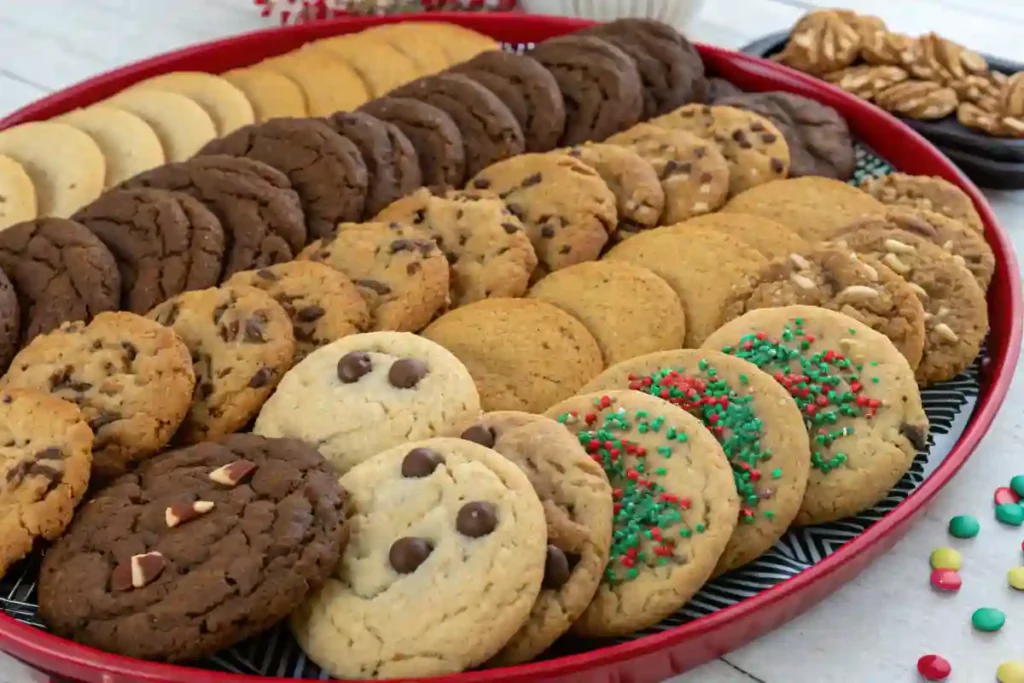
Exploring Cookie Variations
Now that you’ve mastered the classic chocolate chip cookie, it’s time to branch out and discover some exciting cookie variations. Each cookie type offers a unique taste and texture, allowing you to experiment and find your favorites. How to cook cookies can be incredibly creative, so don’t be afraid to try something new!
Sugar Cookies: The Cut-Out Classic
Sugar cookies are a staple for many, especially around the holidays. These versatile cookies are known for their smooth surface, making them ideal for decorating. How to make sugar cookies is fairly straightforward, and the key is to chill the dough well before rolling it out. This helps to maintain the shape of the cookies during baking. After baking, the fun begins – icing and decorating! You can use a royal icing or a simple glaze, along with sprinkles, candies, or edible markers. Sugar cookies are a great option for unleashing your artistic side.
Oatmeal Cookies: Chewy and Hearty
If you’re looking for something a bit more wholesome, oatmeal cookies are a fantastic choice. They’re chewy, hearty, and packed with flavor. How to prepare them involves adding rolled oats to the cookie dough. You can customize oatmeal cookies with various additions such as raisins, nuts, or dried cranberries. A touch of cinnamon or nutmeg will add warm, comforting notes to this already delicious treat. They’re the perfect cookie for a cozy afternoon.
Peanut Butter Cookies: A Nutty Delight
For peanut butter lovers, peanut butter cookies are a must-try. Their nutty flavor and satisfying chewiness make them irresistible. These cookies are often made with both peanut butter and brown sugar for added moisture and sweetness. A popular way to prepare this type of cookie is to use a fork to create a crisscross pattern on the top, which is not only decorative but also helps them bake evenly. You can try adding chocolate chips for a classic combination, or other candies.
Gluten-Free Cookies: Baking without Wheat
For those with gluten sensitivities or dietary restrictions, gluten-free cookies can be a lifesaver. The secret to baking gluten-free cookies lies in using the right flour alternatives. You can find gluten-free flour blends that work well for cookies, usually containing a combination of rice flour, tapioca starch, and other starches. It may be tricky to get the texture of gluten-free cookies correct, so it’s important to carefully follow a reliable recipe. You may need to add ingredients such as xanthan gum, which is a binding agent and prevents the cookies from crumbling. How to bake them correctly is the key.
Vegan Cookies: Egg and Dairy-Free Options
Vegan cookies are a great option for those avoiding animal products, but also because of the variations they offer. How to bake vegan cookies involves finding substitutes for eggs and dairy. Instead of butter, you can use vegan butter or coconut oil. For the eggs, you can use options like flax eggs, or applesauce. There are many dairy-free chocolate chip options available too. It’s all about finding the right combination of ingredients to achieve the perfect texture and flavor.
Advanced Cookie Baking Techniques
Once you’re comfortable with the basics, you can explore some advanced techniques to take your cookie baking to the next level. How to make cookies with different textures requires understanding the effect of each step of the baking process.
Achieving Soft vs. Chewy vs. Crispy Cookies
The texture of your cookie is greatly impacted by a few factors. If you like soft cookies, you should keep the bake time on the shorter side. Underbaking will make the cookies softer, but make sure that they are cooked through. Using more brown sugar can contribute to a chewier texture due to its high moisture content. On the other hand, if you want a crispy cookie, it’s best to bake them for slightly longer. You can also use a lower proportion of brown sugar or even use melted butter in your batter. How to cook cookies with different textures is all about finding the balance!
Using Different Sugars and Their Impacts
You may not have thought about it before, but different sugars can have a big impact on your cookies. Using granulated sugar will result in crispier cookies, while brown sugar will make them chewier. Using maple syrup, or honey can also add to the unique textures and flavours of your cookies. It is useful to understand how to use sugar correctly to achieve the desired result.
Troubleshooting and Storage
Common Cookie Baking Mistakes and How to Avoid Them
Even with the best intentions, sometimes things can go wrong in the kitchen. Baking cookies can be tricky, and it’s easy to make a few common mistakes. But don’t worry, with a little understanding of the science behind the baking process, you can troubleshoot and correct common errors. Let’s explore some of these mistakes and how to avoid them, so your cookies turn out perfect every single time.
Flat Cookies: Understanding the Cause
One of the most frustrating issues is when your cookies spread too much and turn into flat, thin discs. There are a few reasons this might happen, you see. First, you may have used butter that was too warm or even melted. Second, using too much sugar can also lead to excessive spreading. The third culprit is not chilling the dough long enough. And also, your oven temperature may be too low. To fix this, make sure your butter is softened, but still cool. Ensure you measure out your sugar accurately. Always chill your cookie dough before baking, and ensure that your oven is at the right temperature. How to prevent flat cookies requires careful attention to detail.
Overly Dry Cookies: The Moisture Factor
On the other hand, sometimes cookies come out overly dry and crumbly. This is usually caused by baking them for too long or at too high of a temperature. Using too much flour or too little butter or egg can also cause dryness. To avoid this, use a kitchen thermometer to make sure your oven is at the correct temperature, and try using an oven thermometer to monitor temperature accurately. And, always remember to check the cookies a minute or two before the suggested time. Remove them when the edges are golden brown and the centers are still slightly soft.
Unevenly Baked Cookies: Oven Issues
If your cookies are baking unevenly, with some parts being overcooked while other parts are undercooked, it’s likely due to an oven issue. Ovens can have hot spots, and it may be that your baking sheets are not in the ideal spot. To resolve this, rotate the baking sheets halfway through the baking time. You could also use a convection oven if you have one, as it will help to distribute heat more evenly.
Cookies Spread Too Thinly
We touched on this a bit when talking about flat cookies, but sometimes the problem isn’t that the cookies are flat, but that they spread too much and end up touching. How to prevent cookies from spreading is usually a matter of chilling the dough, using the correct amount of fat, and using parchment paper. Also make sure that you don’t place too many cookies on the baking sheet. Give them space to grow without merging together.
How to Store Your Baked Cookies
Alright, you have baked your cookies, but how to store them properly to keep them fresh and delicious? Proper storage will help your cookies to last longer, and will make sure they remain enjoyable.
Storing for Freshness
Once your cookies are completely cool, store them in an airtight container at room temperature. For maximum freshness, store soft cookies separately from crispy ones, as they can affect each other’s texture. Adding a piece of bread to the container can also help keep cookies soft, as it will absorb extra moisture. Make sure that the bread is not a flavored bread, as it may add unwanted taste to the cookies. This way, your cookies will be ready to enjoy anytime.
Freezing Cookie Dough and Baked Cookies
If you have leftover dough, you can freeze it for future use. Simply scoop the dough onto a baking sheet, and freeze for about 30 minutes. Then transfer them to a freezer bag or an airtight container for up to 3 months. Baked cookies can also be frozen. Store them in a freezer-safe container or freezer bag, and then freeze for up to two months. You should thaw frozen cookies at room temperature before enjoying them. This can be a great option if you don’t want to eat all your cookies at once.
Frequently Asked Questions About How to Cook Cookies
You’ve learned a lot about how to cook cookies, but there are likely still a few questions on your mind. Here are some frequently asked questions, designed to give you clear and concise answers to some common cookie baking queries.
What is the best way to measure flour for cookies?
Measuring flour correctly is key. The most accurate way is using a kitchen scale. If using measuring cups, spoon the flour lightly into the cup, avoiding scooping directly from the bag, which can compact the flour. Level off with a knife. Accurate measurements are essential in cookie preparation.
Can I use oil instead of butter in cookies?
Yes, but oil will change the texture and flavor, resulting in softer cookies with less richness. Try substitutes like canola or coconut oil. Start by replacing half the butter with oil and adjust to your liking, but expect differences.
How do I prevent my cookies from spreading too much?
To prevent spreading, always chill your cookie dough for at least 30 minutes. Make sure butter is softened, not melted, and avoid too much sugar. Using parchment paper also helps.
Can I substitute brown sugar for white sugar in cookies?
Yes, substituting brown sugar for white sugar will make your cookies softer and chewier, with a molasses flavor. Be aware that they may spread more. A ratio of one part white sugar and two parts brown sugar can help.
What is the ideal oven temperature for baking cookies?
The ideal oven temperature is generally 350°F (175°C), but check your specific cookie recipe. Use an oven thermometer to ensure accurate temperature.
How long should cookie dough chill in the fridge?
Chill cookie dough for at least 30 minutes, up to 2 hours, or even overnight. Longer chilling allows flavors to meld and helps prevent excessive spreading.
Conclusion: Baking Bliss is Within Reach
Recap of key takeaways
So, there you have it – a comprehensive guide on how to cook cookies! From understanding the essential ingredients and tools to mastering basic recipes, and exploring variations, you’ve come a long way on your cookie baking journey. We’ve delved into the importance of proper cookie preparation, baking tips, and the science of cookie baking. You’ve also learned how to troubleshoot common problems like flat or dry cookies. Remember, baking is a journey, and each batch of cookies is a new learning experience, right?
Encouragement to start baking
Now it’s time to put your newfound knowledge to the test. Don’t be afraid to experiment with different flavors and textures, adjust recipes to your preferences, and most importantly, have fun. The beauty of homemade cookies lies not only in their deliciousness but also in the joy of creation. So, grab your bowls, measuring cups, and baking sheets, and start making some magic in your kitchen! Whether it’s a simple chocolate chip cookie or a more complex recipe, with a little practice, you’ll be baking like a pro in no time. Remember that baking cookies is not just about the final product, but about enjoying the process. And now, you have all the tools and tricks you need to do it right. Happy Baking!

